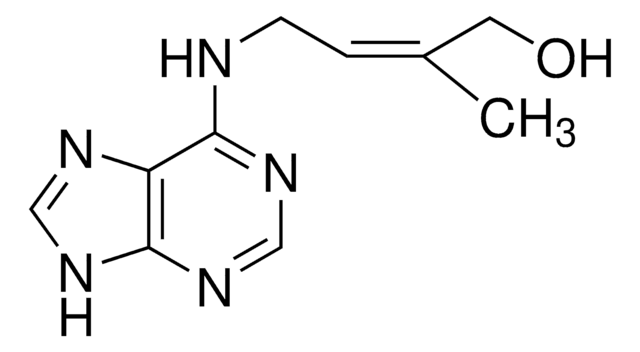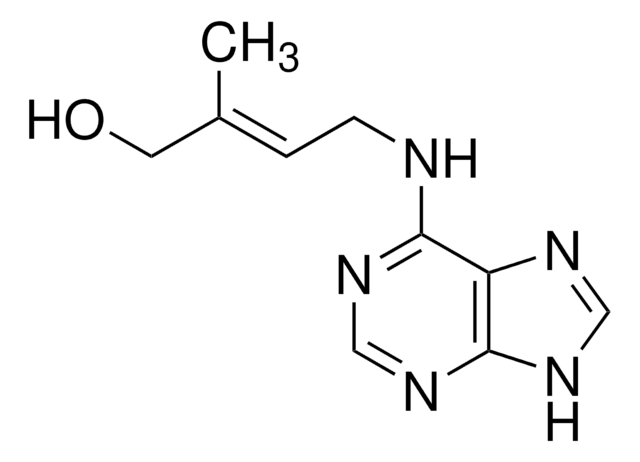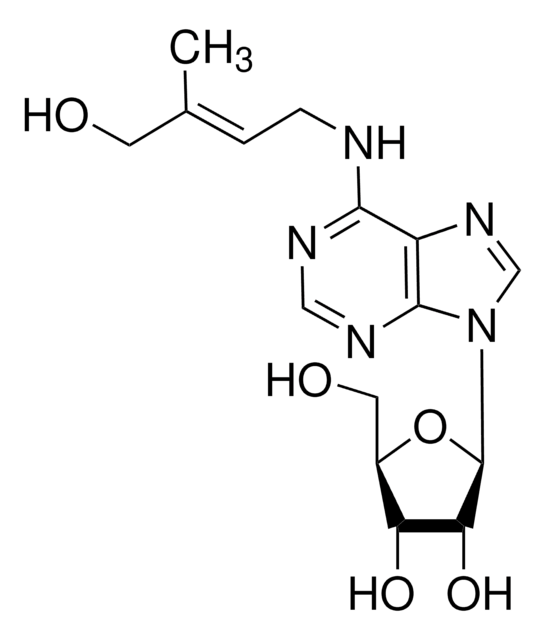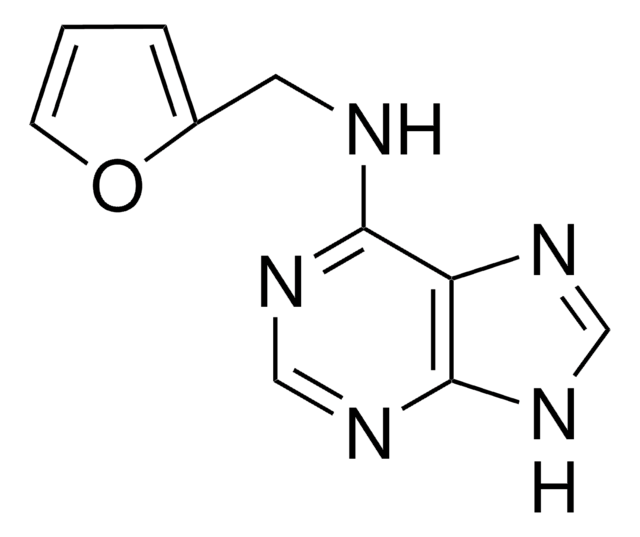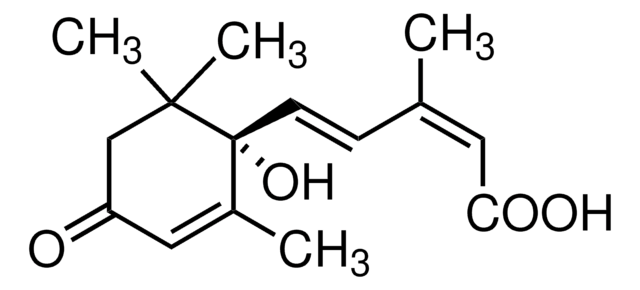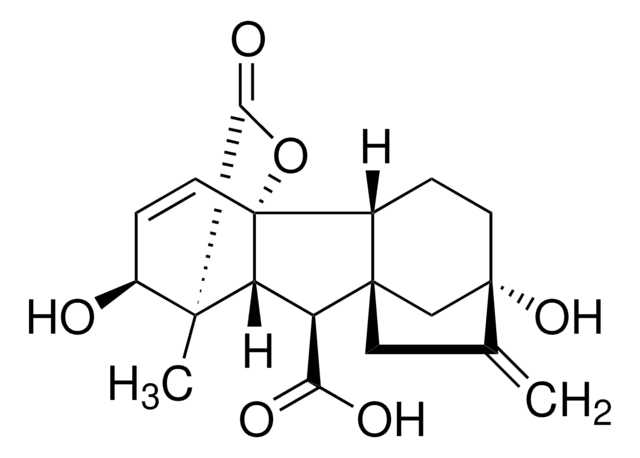08535
DL-Dihydrozeatin
≥98.0% (HPLC)
Se connecterpour consulter vos tarifs contractuels et ceux de votre entreprise/organisme
About This Item
Formule empirique (notation de Hill):
C10H15N5O
Numéro CAS:
Poids moléculaire :
221.26
Beilstein:
1215977
Numéro MDL:
Code UNSPSC :
12352202
ID de substance PubChem :
Nomenclature NACRES :
NA.32
Essai:
≥98.0% (HPLC)
Produits recommandés
Niveau de qualité
Essai
≥98.0% (HPLC)
Température de stockage
2-8°C
Chaîne SMILES
CC(CO)CCNc1ncnc2nc[nH]c12
InChI
1S/C10H15N5O/c1-7(4-16)2-3-11-9-8-10(13-5-12-8)15-6-14-9/h5-7,16H,2-4H2,1H3,(H2,11,12,13,14,15)
Clé InChI
XXFACTAYGKKOQB-UHFFFAOYSA-N
Vous recherchez des produits similaires ? Visite Guide de comparaison des produits
Actions biochimiques/physiologiques
DL-Dihydrozeatin can be converted into zeatin by the enzyme zeatin reductase. It has been identified as a plant growth cytokinin that stimulates flower bud formation.
Metabolite in zeatin biosynthesis, metabolism in radish seedlings, conversion of Zeatin to Dihydrozeatin in Phaseolus Embryos.
Conditionnement
Bottomless glass bottle. Contents are inside inserted fused cone.
Faites votre choix parmi les versions les plus récentes :
Déjà en possession de ce produit ?
Retrouvez la documentation relative aux produits que vous avez récemment achetés dans la Bibliothèque de documents.
Les clients ont également consulté
An Enzyme Mediating the Conversion of Zeatin to Dihydrozeatin in Phaseolus Embryos
Martin, R.
Plant Physiology, 89, 1630-1635 (1990)
Rohit Joshi et al.
Plant, cell & environment, 41(5), 936-946 (2017-03-25)
Cytokinins play a significant role in determining grain yield in plants. Cytokinin oxidases catalyse irreversible degradation of cytokinins and hence modulate cellular cytokinin levels. Here, we studied the role of an inflorescence meristem-specific rice cytokinin oxidase - OsCKX2 - in
R C Martin et al.
Plant physiology, 90(4), 1630-1635 (1989-08-01)
A reductase catalyzing the conversion of zeatin to dihydrozeatin was detected in soluble fractions of immature Phaseolus vulgaris embryos. The enzyme was partially purified by ammonium sulfate fractionation and affinity, gel filtration, and anion exchange chromatography. NADPH was the only
W M Van der Krieken et al.
Plant physiology, 92(3), 565-569 (1990-03-01)
Explants from flower stalks of Nicotiana tabacum L. were cultured on different cytokinins to induce flower bud formation. All cytokinins tested except zeatin and zeatin-riboside induced the same maximal number of flower buds. Benzyladenine, benzyladenosine, and dihydrozeatin were the most
Dihydrozeatin metabolism in radish seedlings.
McGaw, B. A.
Phytochemistry, 23, 1373-1377 (1984)
Notre équipe de scientifiques dispose d'une expérience dans tous les secteurs de la recherche, notamment en sciences de la vie, science des matériaux, synthèse chimique, chromatographie, analyse et dans de nombreux autres domaines..
Contacter notre Service technique